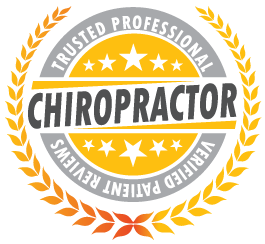What Do You Know About Spinal Subluxation?

“Spinal subluxation” is a commonly used term in the chiropractic world. So, what is spinal subluxation? Spinal subluxation is the compression of nerve pathways. Spinal subluxation, in simple terms, refers to a partial dislocation.
In chiropractic medicine, this describes a slight misalignment of any highly specialized bones that make up the spinal column. The ligaments around the vertebra in the spine rupture and are injured. The bones could also be injured. These injuries can suppress the spinal cord and cause nerve pain. Patients often experience shooting pains or even loss of nerve function.
The result of the misalignment can range from mild discomfort to total interference to your quality of life. Recognizing and readjusting spinal subluxations is essentially the cornerstone of chiropractic medicine. If left untreated a spinal subluxation can trigger a degenerative process in the surrounding areas. It might become more difficult to reverse the spinal subluxation after waiting a long time for treatment. The body adjusts itself to the misaligned or partially dislocated shape.
Causes
Spinal subluxation could have several causes.
- Trauma or injury is the most common cause. This can include a fall, a car accident, or sports injury.
- Poor posture overtime can lead to spinal misalignment. This misalignment can pinch the nerves.
- Overuse can also lead to spinal subluxation. This is especially common in sports where an athlete is using joints in a repetitive pattern over an extended period.
- Another common cause of subluxation is stress. Emotional stress such as grief, anger, anxiety, and frustration can impact the entire body.
- Chemical stress can also cause spine pain. Poor nutrition, high sugar, refined carbohydrates, and unhealthy fats are examples. Drugs, preservatives, tobacco, alcohol, and even pollen can also impact our nervous system and our spine.
- Gravity is another stress on the body. We experience it 24/7, even in our sleep. Most of the time, the body is designed to handle this stress When there is misalignment in the spine, however, it can become much more difficult.
Symptoms
There are several indicators of a possible spinal subluxation. A patient may have limited mobility or a loss of range of motion. You may be very stiff and inflexible. The patient may feel instable and may have trouble walking. A patient may even have a burning sensation, numbness, or loss of feeling in the extremities. The numbness is usually temporary.
Additional symptoms may seem less obvious. Patients often experience fatigue, dizziness, and nausea. Patients experiencing spinal subluxation may also experience headaches, earaches, or ringing in the ears. You may experience irritability. Patients may even have trouble with the bowel or ladder.
Other Impacts
Most chiropractors believe that spinal subluxation is a process that negatively impacts an individual as their tissues undergo constant and steady changes, rather than being from a sudden jolt or traumatic injury. There are several other things in the body that can come along with a spinal subluxation.
Dysfunction
Every organ in the body is connected to the spinal cord through the nerves. When you suffer from spinal subluxation, the nerve function is reduced. When this function is reduced, the overall function of the organs and tissues is also reduced. The body is not working as it should and disease may occur.
Muscle Atrophy
When we are not able to move well and fully use our muscles, the muscles begin to shrink and waste away. When this occurs with muscles around the spine it can cause the initial misalignment to worsen.
Congestion
Some muscles around your spine can develop pockets of congestion where toxins build up and irritate the nerve endings. As a result, a patient will experience pain.
Edema
Your body has millions of tiny blood vessels all over. When they are pressured or damaged, it can allow fluid to leak from them into the surrounding tissues. When this happens, you end up with swelling and fluid retention called edema. This swelling can further shift your spine’s alignment.
Fibrosis
Thick scar tissue may develop around the muscles between the vertebrae in the spine. The scar tissue may slowly begin to replace the normal muscle tissue.
Hyperemia
Hyperemia is a disruption in the normal blood flow around the body. Blood may pool in one area of the body while it is blocked from another.
Local Ischemia
Muscles with a lack of blood flow may become very tender and painful to touch. This could be the result of increased muscle spasms.
Minute Hemorrhages
A minute hemorrhage is a condition where you have small amounts of abnormal blood flow or bleeding inside your body’s blood vessels.
Tissue Rigidity
The tendons, ligaments, and muscles around the spine can experience rigidity as an untreated spinal subluxation gets worse.
Treatments
Early treatment is vital to ensure that the joint heals correctly and in the proper position. Proper treatment will help to avoid any future pain or further injuries. The best treatment is from a chiropractor. The primary goal of chiropractic care is to maintain the alignment of the spine and body. Identifying and adjusting spinal subluxations is critical to this goal. In addition, patients can include treatments at home such as proper rest, ice, compression, and elevation (RICE). There are also stretches a patient can do at home. These home treatments will help with some of the symptoms, but they cannot treat the spinal subluxation itself. Only a licensed chiropractor can do that with a proper adjustment.
If you think you may have a spinal subluxation, MDR Advanced Medical Associates can help! Learn more about our spine care here! Our Boynton Beach chiropractors will take the time to assess every aspect of your lifestyle, medical history, and body to find a permanent solution to ease your pain. Contact our team today at 561-731-3361 to schedule an appointment or learn more. We look forward to hearing from you.
Are you on Facebook? We are too. Let’s be friends!
Disclaimer: The information included in this article is for educational purposes only. It should not be used as a substitute for professional medical advice, diagnosis, or treatment.
[fl_builder_insert_layout slug=”global-sidebar”]





